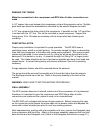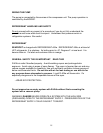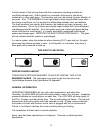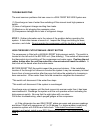23
TO CHECK WITH BUBBLES
Soap each connection and observe all sides of the connection with a bright light and a
mirror. A leak will blow bubbles. Without careful examination and plenty of pressure
this test is not reliable.
TO CHECK WITH AN ELECTRONIC DETECTOR
Use a detector designed for HFCs. Slowly trace the area with the probe. Refrigerant is
heavier than air, therefore, trace below the fitting. Most units can be calibrated to home
in, on a leak. (See detector instructions). We use and recommend electronic detection.
TIF brand detectors can accurately detect leaks as low as 1/2-oz loss per year. This
sensitivity exceeds S.A.E. leak specifications. Be sure to test the operation of the
detector before and after you leak check the system
IF A LEAK IS DETECTED
Try tightening the Swagelok nut slightly. (See "Swagelok fittings"). If the leak is not
stopped, it is possible that the fitting was incorrectly assembled. Discharge (reclaim) the
refrigerant, and then disassemble the fitting for inspection. After reassembly, proceed
with evacuation leak test.
SPECIAL NOTE
- Be aware that propellants and solvents in sprays and foams may upset electronic
detectors.
- To confirm a leak detected with a detector use bubbles and be sure it is a leak and not
some erroneous vapor that is upsetting the machine.
- Electronic detectors do not function below 40.F.
- A good leak detector is able to pick up leaks as low as 1/2 oz per year.
FINAL CHARGING
This procedure must follow "Evacuation Leak Test" and "Introducing Initial Charge".
1. With the refrigerant supply still attached to the suction service port from the
previous procedure, open the cylinder valve (and the appropriate gauge wheel).
2. While closely observing the sight glass in the RFD, start the compressor by
switching on the circuit breaker and then turning on the thermostat.


















